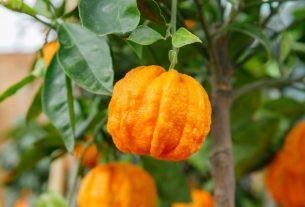Radula is a genus of plants that contains around 300 different species, such as Radula marginata your Radula laxiramaeand which appears to have effects similar to those of Cannabisanother plant, popularly known as marijuana, which has a sedative and hallucinogenic effect.
While in Cannabisthe substance that has an effect on the brain is tetrahydrocannabinol (THC), in the nadula, the substance is called perrotinolene (PET), and appears to affect the same brain receptors as THC, causing not only hallucinations and the feeling of good -being, as well as having some health benefits, such as reducing chronic pain or inflammation in the body.
Radula is a traditional plant from New Zealand, Costa Rica and Japan, traditionally used by indigenous peoples for many years to treat some health problems, but it is only now being investigated by scientists to identify all its effects and understand whether it is safe for health. health.

What is it for
Because it acts directly on the brain and has a strong analgesic effect, radula PET could be used in medicine to help treat some problems such as:
- Inflammation in various parts of the body;
- Chronic pain that does not improve with other treatment;
- Psychological problems, such as depression or anxiety.
However, as in the case of marijuana, several studies are still needed to confirm these properties and evaluate its safety.
Possible side effects
Due to its similarity with the components of marijuana, radula PET may cause several side effects in the body, especially when used indiscriminately. Some of these effects may include difficulty moving, apathy, decreased motor coordination, changes in heartbeat, decreased libido and even hormonal changes.
However, it is also possible that these side effects are less than those of marijuana, as the PET in radula is less potent than the THC in marijuana.
Furthermore, PET appears to affect neurons less negatively than THC, and does not appear to produce long-term memory problems, as long as it is used correctly.
See the main side effects of marijuana, which may also occur with the use of radula.
Bibliography
- GULCK, T.; MOLLER, B. L. Phytocannabinoids: Origins and Biosynthesis.. Trends Plant Sci. 25. 10; 985-1004, 2020
- ZHANG, CY; et al. Prenylated bibenzyls from the Chinese liverwort Radula apiculata. J Asian Nat Prod Res. 1-7, 2021
- HUSSAIN, T.; et al. Identification of Putative Precursor Genes for the Biosynthesis of Cannabinoid-Like Compound in Radula marginata. Front Plant Sci. 9. 537, 2018
- KUSARI, P.; et al. Biocontrol potential of endophytes harbored in Radula marginata (liverwort) from the New Zealand ecosystem. Antonie van Leeuwenhoek. 106.4; 771-88, 2014
- ASAKAWA, Y.; et al. Distribution of Bibenzyls, Prenyl Bibenzyls, Bis-bibenzyls, and Terpenoids in the Liverwort Genus Radula. J Nat Prod. 83. 3; 756-769, 2020
- TOUOTA, M.; et al. New Bibenzyl Cannabinoid from the New Zealand Liverwort Radula marginata. Chemical & Pharmaceutical Bulletin. 50. 10; 1390-2, 2003
- KUMAR, A.; et al. Cannabimimetic plants: are they new cannabinoidergic modulators?. Planta. 249. 6; 1681-1694, 2019
- REIS, MH; et al. Shared Binding Mode of Perrottetinene and Tetrahydrocannabinol Diastereomers inside the CB1 Receptor May Incentivize Novel Medicinal Drug Design: Findings from an in Silico Assay. ACS Chem Neurosci. 11. 24; 4289-4300, 2020
- CHICCA, A.; et al. Uncovering the psychoactivity of a cannabinoid from liverworts associated with a legal high. Science Advances. 4. 10; 2018

Sign up for our newsletter and stay up to date with exclusive news
that can transform your routine!
Warning: Undefined array key "title" in /home/storelat/public_html/wp-content/plugins/link-whisper-premium/templates/frontend/related-posts.php on line 12
Warning: Undefined array key "title_tag" in /home/storelat/public_html/wp-content/plugins/link-whisper-premium/templates/frontend/related-posts.php on line 13



